How to Store Kitchen Tools and Flatware
Find out the ideal width and depth of drawers, get ideas for vertical storage and see how to work with existing cabinets
They say the key to organization is a place for everything and everything in its place. This is true for even the smallest items, such as your kitchen utensils. These include your everyday flatware as well as the many small but mighty cooking tools a serious chef requires. Here are some of my favorite options for storing your utensils, in any space and on any budget.
Step One: Eliminating
Before you can organize any part of your home properly, you need to do some culling, and this is especially true in the kitchen. Drawers can quickly become filled with unused tools and gadgets, so take a hard look at the items you own and find as many as possible to give away or box up.
Before you can organize any part of your home properly, you need to do some culling, and this is especially true in the kitchen. Drawers can quickly become filled with unused tools and gadgets, so take a hard look at the items you own and find as many as possible to give away or box up.
You may never get your collection of utensils down to the perfectly minimal arrangements shown in these photos, but the more items you can eliminate, the easier it will be to store and find the truly useful ones. Never use the little dessert spoons that came with your cutlery set? Only used that special spatula (designed to perfectly flip a single egg) the one time? Stash these items away in less reachable spaces such as upper cabinets to free up more prime cabinet real estate.
If Renovating, Make a Plan for Success
If you’re renovating or building a kitchen, you shouldn’t put off the organizational considerations until all the construction is complete. Thinking in advance about how to hold your collection of tools will produce a much better result. Planning to include a few drawers specifically sized for utensils will save a lot of potentially wasted space.
If you’re renovating or building a kitchen, you shouldn’t put off the organizational considerations until all the construction is complete. Thinking in advance about how to hold your collection of tools will produce a much better result. Planning to include a few drawers specifically sized for utensils will save a lot of potentially wasted space.
Give Depth Some (Deep) Thought
Besides considering the width of the drawers, don’t forget to think about the depth. Drawers are often 6 to 8 inches deep (on the exterior face) by default simply because the cabinet has been split evenly into three to four drawers. However, a 4- to 5-inch-deep drawer (again, on the face, which translates to just a few inches inside) is all you need to store well-organized utensils. Using more and shallower drawers keeps items from getting piled on top of each other and lost in the mix.
Besides considering the width of the drawers, don’t forget to think about the depth. Drawers are often 6 to 8 inches deep (on the exterior face) by default simply because the cabinet has been split evenly into three to four drawers. However, a 4- to 5-inch-deep drawer (again, on the face, which translates to just a few inches inside) is all you need to store well-organized utensils. Using more and shallower drawers keeps items from getting piled on top of each other and lost in the mix.
Ideally, you should look at the collection of utensils you have (or plan to have) and map out exactly how much space they will need. This takes some extra effort upfront, but you will end up with a much better allocation of space than by simply choosing drawers in an arbitrary width. You can try laying out your utensils on a dining table to get a visual picture (and some measurements) of how much space they ideally would get.
Cabinets with a drawer at the top and doors and shelves below allow smaller, often-used items to be placed at a more reachable height, with the shelf storage left for more occasional items and oversized pieces. If you use lots of small chef’s tools when you cook, consider including many utensil drawers at the top level. It will save you a lot of bending down over time.
Consider Going Vertical
Want to tidy up your cutlery drawer without having to assign each piece an individual place? Try a drawer with vertical cutlery bins that let you simply drop in pieces with long handles (such as spatulas and slotted spoons) and pull them out easily. You’ll be able to see each piece, and you won’t have to remember exactly where you got it later.
Want to tidy up your cutlery drawer without having to assign each piece an individual place? Try a drawer with vertical cutlery bins that let you simply drop in pieces with long handles (such as spatulas and slotted spoons) and pull them out easily. You’ll be able to see each piece, and you won’t have to remember exactly where you got it later.
This style of cabinet can make a great use of skinny spaces left over in your cabinet plans, such as the small spaces next to a range or sink.
Create Layers
Another way to make the best use of deep drawers is to break them up internally into layers. You can either use a built-in drawer divider system or find a layered drop-in unit.
A tiered organizer like this can create compartments smaller than an individual drawer to gain maximum space efficiency. Just keep in mind that the upper layer will partially cover the lower layer (or will need to be slid individually), so you should put the most-used items on the most reachable tier.
Another way to make the best use of deep drawers is to break them up internally into layers. You can either use a built-in drawer divider system or find a layered drop-in unit.
A tiered organizer like this can create compartments smaller than an individual drawer to gain maximum space efficiency. Just keep in mind that the upper layer will partially cover the lower layer (or will need to be slid individually), so you should put the most-used items on the most reachable tier.
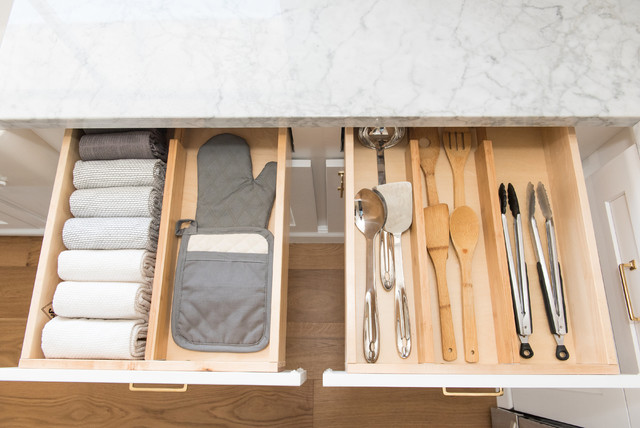
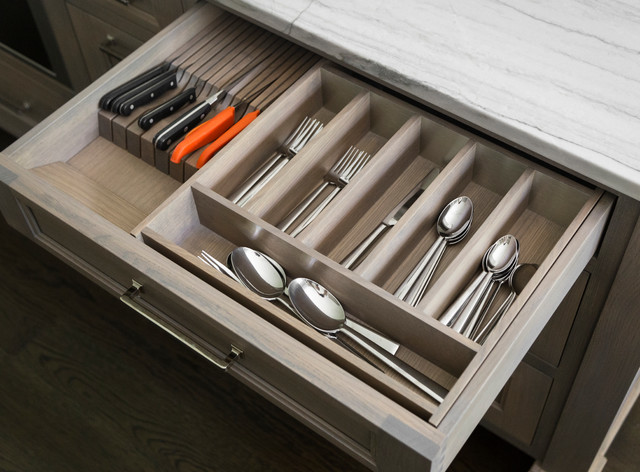
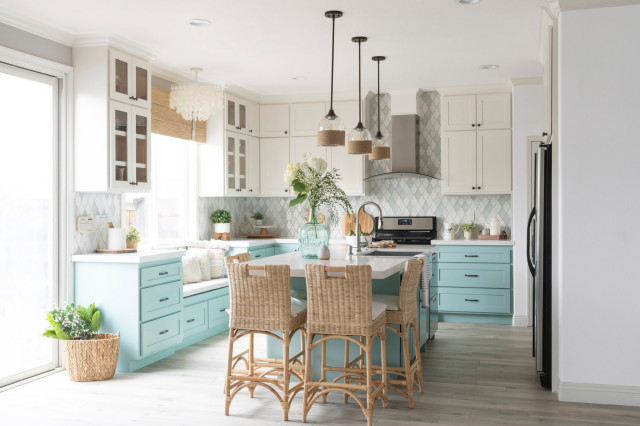


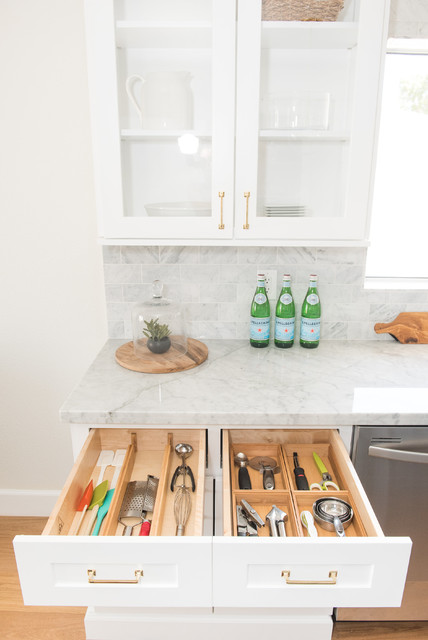

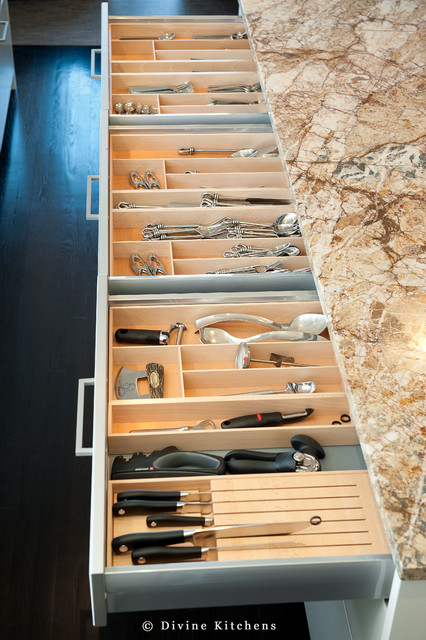
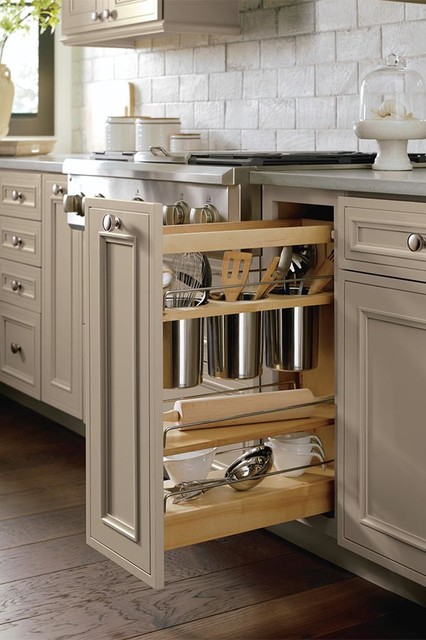
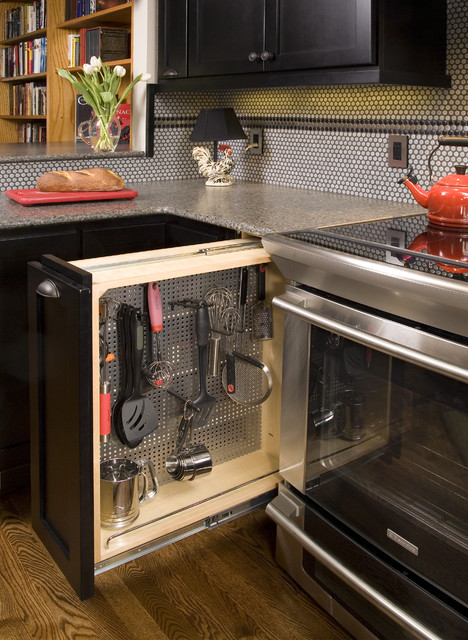
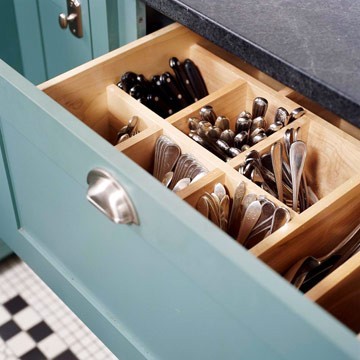
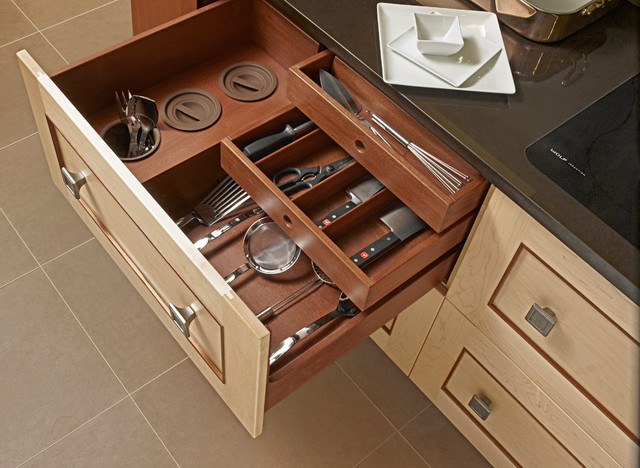
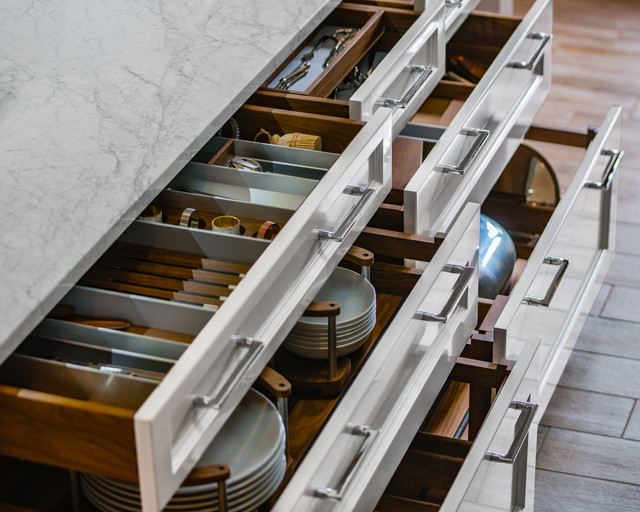
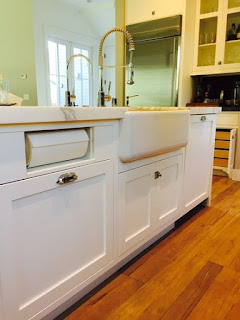

Comments
Post a Comment